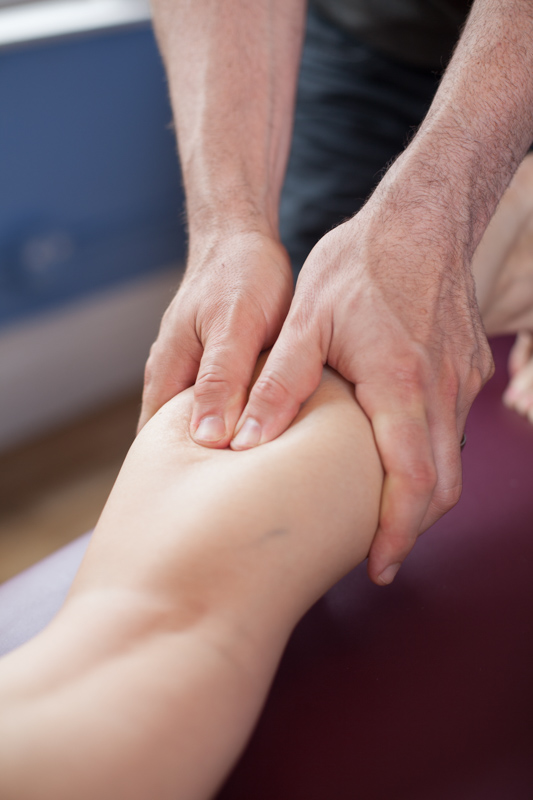
28 Sep KFMT viewpoint: the healthy knee
KFMT Director Elliot Fishbein takes you through how KFMT addresses the knee!
Knee function is more complicated than it may seem. The knee joint itself has very limited options for movement – it bends + it straightens – so treatment might seem quite limited, too. However, the knee is often “a victim of circumstance,” meaning it’s significantly affected by factors above (the hip + pelvis), and below (the foot + ankle), in addition to any issues at the knee itself. A healthy knee can be affected by the following:
The hip:
Altered position of the hip can lead to you falling into a “knock knee’d” position, or being fixated in a more “bow-legged” position. Either position makes it difficult to effectively access your hip strength, putting stress on the knee joint + tendons, and, if doing higher impact activities, can predispose you to ligament or cartilaginous injury. This positioning can happen due to:
- Strength deficits: Weakness in your lateral hip musculature + your core can lead to you collapsing at the hip when standing on that leg which leads to you collapsing to the “knock-knee’d” position. In addition loss of strength along your medial thigh can cause a loss of hip and knee stability.
- Hip position: Hip positioning can be influenced by old traumas, muscular and joint tension, as well as genetic factors. Factors that are non-genetic (how you’re genetically structured) can be treated with both Manual Therapy + exercises to normalize the hip position and normalize the influence of your hip on your knee.
The foot + ankle:
Often foot/ankle position is a culprit in not providing a stable base of support for your knee. This foundation for your knee can be influenced by:
- Foot position: It is often taught that your foot/ankle joints are fixated in the position you are born with. If the position your foot is resting in is not balanced, it will not adapt well to the ground and you will have poor shock absorption &/or stability when your foot hits the ground. This lack of balance and shock absorption will then translate up to your knee. With the FMT® approach, we find we are usually able to change joint position using Manual Therapy + exercise. If this is not possible we refer you to a practitioner for orthotic fitting to balance the foot.
- Foot + ankle strength: Sometimes, you just need improved strength & stability at your foot and ankle. If you don’t have this, even with good joint position, your foot will collapse into the ground and create balance and poor shock absorption that will translate up to your knee.
The knee + surrounding structures:
The knee joint & muscles affect your knee function in the following ways:
- Strength: If your quads and hamstrings aren’t strong enough, the stress will fall on your knee joint, ligaments + tendons and can lead to painful conditions.
Fascial Compression: Fascial tension in your thigh and calf/shin can create a compressive effect at the knee joint. In addition, you won’t absorb shock as well and that stress will be absorbed by the knee joint. - Altered joint position: Past traumas (small or large) can fixate your knee joint in a position that creates stress, instability or compression on the knee. Manual Therapy + exercise can help to reduce this stress. In addition, de-compressive therapy for your knee cap is often needed for people with patella-femoral syndrome & pain.
- Pathology: This means your knee joint, tendons, ligaments or menisci have some degree of damage. This may require resting + time to heal, as well as other treatments to facilitate healing and reduce inflammation. In addition, referral to a doctor may be needed to help further facilitate healing of the damaged structure or assess if there are other medical conditions that could be influencing your healing.

No Comments